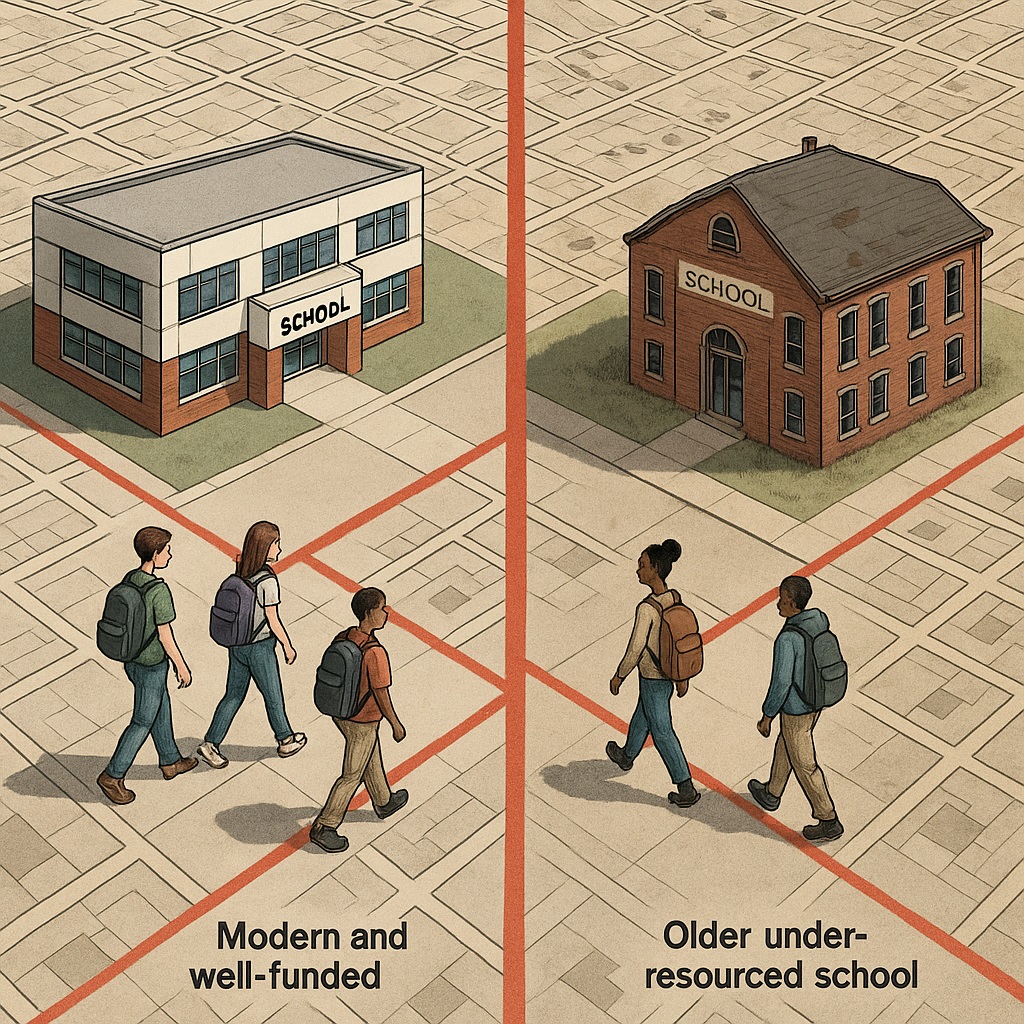
The question of “does school zoning create unequal education” is central to the debate about fairness in U.S. public schools. By tying school attendance to home addresses, zoning reinforces economic and racial divides. Students in wealthier neighborhoods access better resources, while those in lower-income areas are left with fewer opportunities.
How School Zoning Creates Unequal Education
School zoning assigns children to public schools based on where they live. While the system is meant to simplify logistics, it also ties educational quality to neighborhood wealth and property values. This often creates sharp divides between districts just miles apart.
The Unequal Outcomes of Zoning
Funding Gaps and Unequal Education
Because local property taxes fund schools, wealthier zones naturally provide better facilities, more advanced courses, and extracurricular programs. Poorer zones struggle, deepening the inequality. The reality is clear: does school zoning create unequal education? In many cases, yes.
Racial and Economic Segregation
Neighborhood demographics often shape school zoning lines. This results in de facto segregation, where students of color and low-income families are concentrated in underfunded schools, while affluent districts remain insulated.
Limited Student Mobility
Even when families want access to better schools, zoning laws make it nearly impossible. This traps many children in schools that fail to provide equal opportunities.
Policy Questions and Possible Solutions
Redrawing Boundaries to Reduce Unequal Education
Policymakers must ask: does school zoning create unequal education by design, or can it be fixed? Adjusting district lines to balance demographics could reduce disparities.
School Choice and Open Enrollment
Some states experiment with allowing students to attend schools outside their zones. While this can broaden access, it also raises transportation and funding challenges.
Strengthening Funding Equity
Even if zoning remains, policies that equalize funding across districts can ensure all children receive a fair chance regardless of ZIP code.
Addressing the Zoning Divide
The question “does school zoning create unequal education” has no single answer, but evidence shows zoning plays a major role in deepening inequality. If public education is meant to be the great equalizer, then district lines should not dictate the quality of a child’s future. Reform is needed to create a fairer system for all.
Related Resource:
Internal Links:
External Links:
- Economic Policy Institute – School Inequality
- EdBuild Report – Fault Lines
- The Century Foundation – School Integration
Read more at Lonnie Palmer
One Response